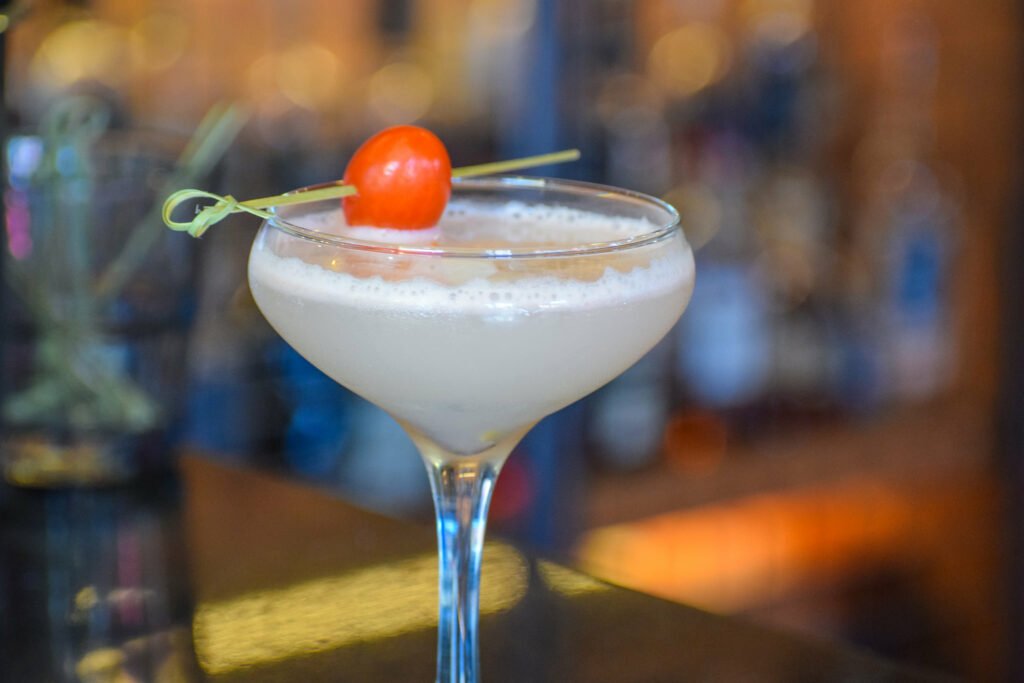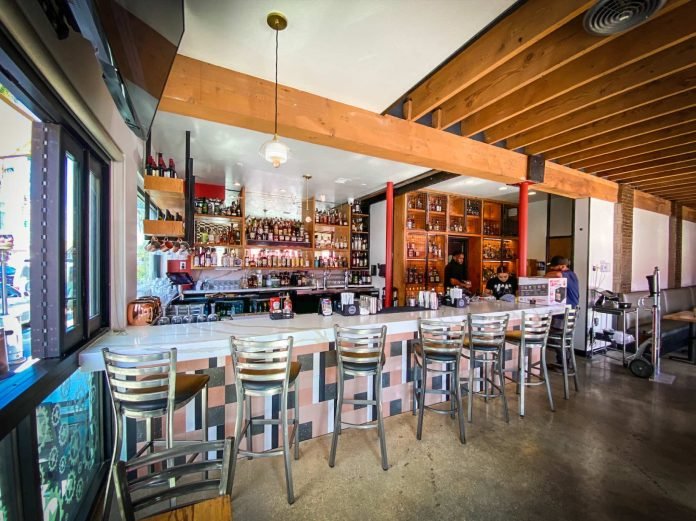The Social List was, if anything, a food experiment for Retro Row, the tiny-but-seemingly-ever-evolving stretch of 4th Street the this become one of the city’s most recognizable stretches of commercial space. Taking over what used to be a custom framing shop, the wordplay on “socialism” was supposed to evoke a mixture of Eastern European aesthetics with contemporary European bars and bistros, where patrons can easily bounce from joint to joint, eating a little here and drinking a bit more there.
But as with many ideas concocted in the heads of hungry humans, things had to be tweaked, food had to be altered, and concepts had to evolve. Brenda Rivera—half of the Navarro Hospitality Group, the other half being her husband, Luis Navarro—had long been wanting to shift The Social List from its third menu iteration into its fourth—and then the pandemic hit.
“We [myself and manager Erik Rios-Wentzky] had been researching and developing this menu since before the pandemic,” Rivera said. “We had our plates, we were finalizing all the little details—how much heat for the new Geisha burger, what type bitters for this cocktail… It was all ready to go. So we’ve been waiting for over a year to share this with everyone.”
The new menu, in the words of Navarro, has “Brenda’s fingerprints all over it.” And it all started with an IPA from one of Kyoto’s craft sake makers.

Kizakura’s “fusion IPA”—known as Kyoto Matcha IPA—has long been available to the patrons of the sake brewing company in the central city of Japan. But when Rivera finally scored her first bottle of the IPA, she knew that a Japanese influence on The Social List’s international menu would be the start of the restaurant’s latest menu.
A beautifully dark green, it is certainly a beer that few, if anyone, is offering in Long Beach: eschewing the West Coast-driven IPAs that are all about hop-forward, “juicy” brews that home in on citrus and piney notes, this match IPA is more akin to the malt-forward IPAs of Britain and Germany, with a distinctly Japanese hint of minty green tea.

These flavors of Japan—from wasabi and yuzu to sake and Kewpie mayo—are the guiding line for a menu that otherwise spans everywhere from the U.S. and China to Cuba and Italy.Take, for example, one of my favorite new sandwiches in the city: a stacked, smoked brisket sandwich where good ol’ ‘Merica meets the Rising Sun. A wasabi-and-ginger dressed slaw, Kewpie mayo-wasabi spread, pickles, and a Japanese-style, sweet-and-sour barbecue slather that uses sake and the country’s beloved tonkatsu sauce as its base. It’s rich but balanced, with the acidity of pickles and bite of wasabi cutting through the richness of the brisket and creaminess of the Kewpie.
“It’s a genuine morphing of American and Japanese barbecue,” Navarro said.
Further playing with international flavors—and tied once again with their Asian-inspired slaw and pickle pairings, which I have become admittedly obsessed with—is a Szechuan pepper-laced fried chicken sandwich whose numb-inducing qualities are paired with sweet and sour perfection.Or take their new burger, dubbed “The Geisha.”

This chili-and-(no)-cheese burger sounds about as American as you can get—even without the cheese, which honestly is a great choice because it is sincerely not needed—with its crispy leaf of good ol’ iceberg, a thick tomato slice, and sesame bun. But Rivera and her crew play with Japanese-style chili, where heat and tartness override savory and rich. The result is a steady ride of heat that is once again coated with Kewpie mayo, this time mixed with yuzu, and layered atop a Wagyu beef blend patty.
It’s definitely a chili burger—and yes, you can request some cheddar but I honestly dissent such a request—but it not the chili burger you’ll be finding at Douglas, Louis, or Golden Burger.

These things join other things that are shockingly good though otherwise typical, particularly an ode to the Chinese salad that was a staple throughout the 90s and early 2000s: bits of mandarin and crispy chow mein noodles meet edamame, red cabbage, almonds, and carrots in a surprisingly addictive sesame dressing. It’s not only nostalgic for us American kids discovering different palates through corporatized chains but it reminds us of how classics can never really die. I genuinely be content ordering this, a matcha IPA, sitting on their parklet, and people watching the eclectic crowds of Retro Row.
And empanadas? Why not—again, nothing revolutionary but not needing to be: with your choice of chicken or beef, these wonderfully buttery pockets of savory deliciousness are simple offerings made extremely well—and that final part is the ultimate thread tying everything together.

Sure, Rivera uses the vast land of Japanese culinary offerings to create new offerings of her own—but ultimately, she is not trying to challenge people by reinventing the wheel but making an already solid menu even better.
It is even reflected in their new cocktails that accompany the matcha IPA—all of which the ones I sampled are quite stellar, including a smoke-laden, Japanese whiskey old-fashioned-like, boozy concoction that is as smooth as it is dangerously sippable called “Tokyo Drift.”

But the true standout, at least for me, was The Thai Fighter. A tomato-meets-coconut-and-chile mixture, the gin-based cocktail uses Sunday Morning as a base, throwing in hints of lemongrass, ginger, lime, and Thai chile for a roller coaster of a drink that goes from savory and sweet to spicy and acidic. It’s, genuinely, one of the best new cocktails I’ve had in a bit.
“The acidity of a muddled cherry tomato is a genuinely great addition for cocktails,” Rios-Wentzky said. “It took us so many tries to get this balance but we found it and we’re proud of it.”
And they should be proud because evolution is key to our food scene. Sure, the much-loved staples of The Social List—their stellar pan-fried dumplings, their patatas bravas, their media noche—all remain.
And evolution, much to the chagrin of the pretentious crowd, doesn’t always need to be avant-garde. The Social List isn’t trying to be nor does it want to be Vespertine. It wants to be what it initially strived to be: a space for people to find comfort, a place that whether it is the final destination or a stepping stone on a long night of bites and drinks.
Maybe that initial idea wasn’t so off in the first place because The Social List, watching its vibrant crowd of all types mingling and eavesdropping and socializing, feels like a pub that’s been a part of Long Beach for decades.


